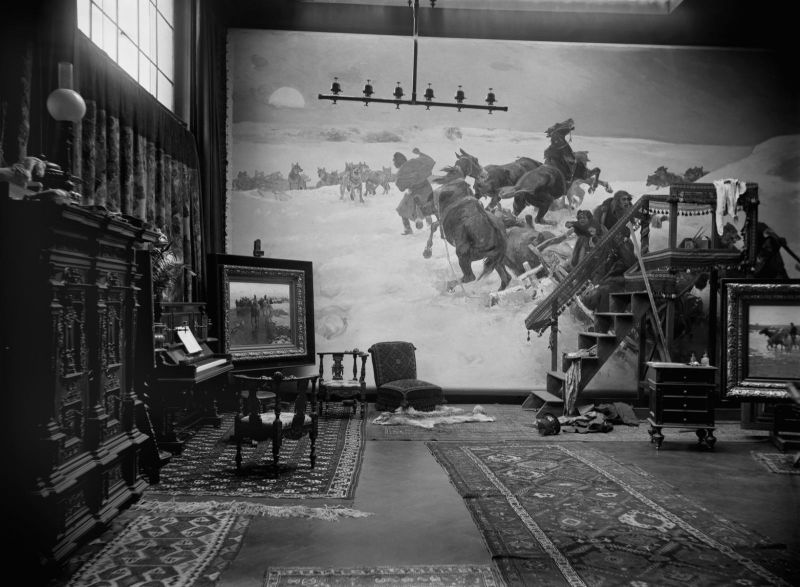Ateliers of Polish painters in Munich ca. 1890
Mediathek Sorted
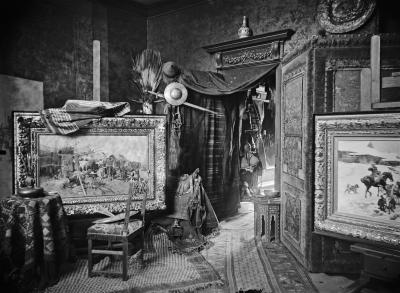
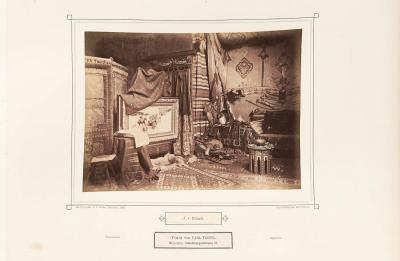

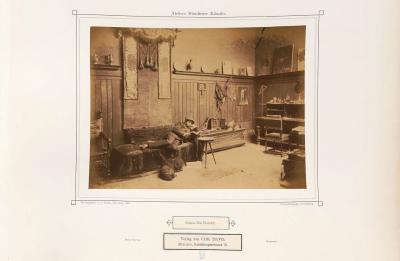






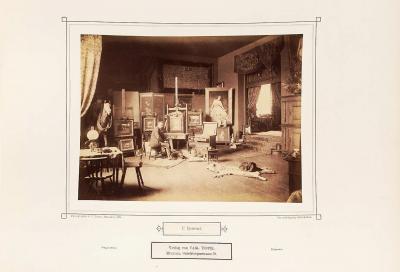




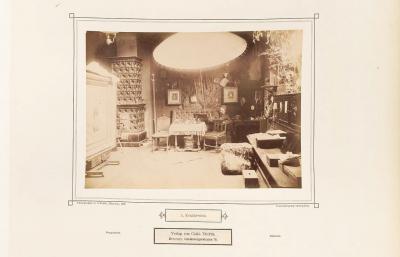


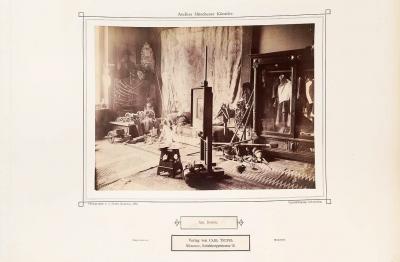



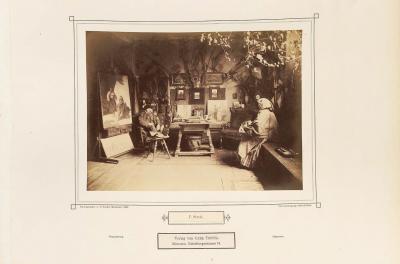

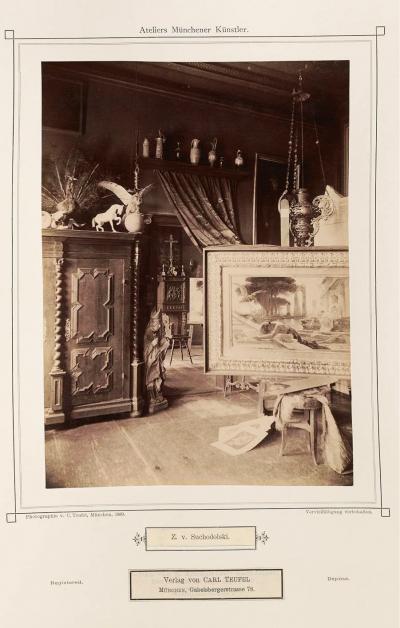

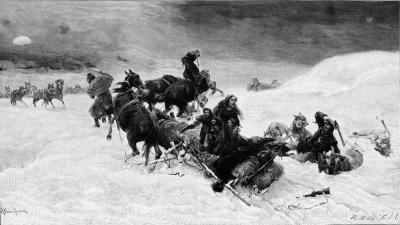


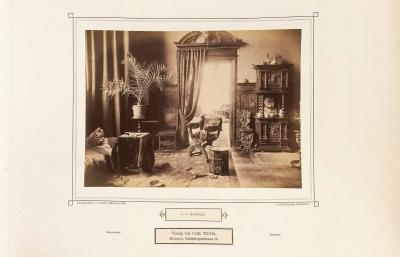
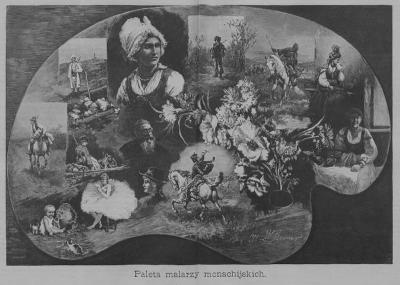


A report by the painter, presumably from the middle of the nineties, provides an animated impression of the Prince Regent’s relationship with the Munich artists: “I am painting doggedly in my empty atelier, when there’s a ring at the door and a dashing officer comes in. He introduces himself as an adjutant of Prince Regent Luitpold and reports that his Royal Highness wishes to see my work and is waiting downstairs. Of course, I ran downstairs and showed the old gentleman in politely, who, as I found out later, saw it as his duty to visit the ateliers of artists living in his capital. And so he climbed up to my atelier, looked round, asked questions, as is good form, and then he offered me a cigar […] A few days later, an invitation to visit the Prince Regent came fluttering in like a bolt from the blue. […] I threw on the mandatory gala apparel and hurried to the meal, at five in the afternoon! I and another delinquent Czachórsk were received in a magnificent hall by the adjutant I had already met and ladies-in-waiting of Princess Therese, the daughter of Prince Regent Luitpold. After some time, our old gentleman appeared […] and escorted said Therese, a withered and non-descript spinster […]. Later, the door was opened with a bang and we were asked to take a seat at the dinner table. […] The meal was refined and good, but went on for a very long time and the conversation didn’t really want to get going.”[86] In 1895, Rosen went to Paris then lived for several years in Lausanne, Warsaw, Italy and Lwów.
Władysław Czachórski (1850-1911)[87], known in Munich as Ladislaus von Czachorski, came to Munich in October 1869 after a few semesters in the Warsaw Drawing Class/Klasie Rysunkowej, which was founded in 1865 after the Art Academy had been closed at the decree of the Russian authorities, and at the Dresden Art Academy. He studied in Munich until 1874 under Piloty, Wagner and Hermann Anschütz (1802-1880). As Piątkowski reported, Czachórski, who he presumably already knew from the Warsaw Drawing Class, came from a noble family of landowners in Lublin.[88] In 1872, Czachórski wrote to his parents, who had obviously not been informed of his taking the step of settling in Munich as an artist, about his first atelier: “I found a quiet companion, an extraordinarily hardworking and punctual man, N. Iwanowski (a married Lithuanian), who likes to get involved. So, for that reason, we rented a really spacious atelier together for three months […] for 8 fl. [guilders], which will cost me 12 fl. We intend to paint for 4 or 3 hours a day, which together with the rooms will cost us about 16 fl. each month. I fear and appeal to you Father and Mother that you will not be angry with me for having taken such an audacious step without your permission.”[89] But the young artist was successful. His trusting and relationship with Piloty was not the only one; the “old Kaulbach”, which referred to the Director of the Art Academy, Wilhelm von Kaulbach (1805-1874), even bought a sketch from an exhibition for his collection. He wrote about it to his parents: “Even if the financial benefit isn’t great, the moral benefit is significant. This is because Kaulbach only accepts the best sketches every couple of years or so and the skinflint has a set price for them”.[90]
Czachórski went travelling for a few years through France and Italy from 1874. In 1879, he again established his own atelier in Munich, which is listed from the mid-1880s at Schillerstraße 26 in Ludwigsvorstadt on the second floor of a rear building completely occupied by artists’ ateliers.[91] He became an honorary member of the Art Academy in 1890, and in 1893 was awarded the Bavarian Order of St Michael. In the same year, Luitpold acquired his painting “The Reader” for his collection. Czachórski stayed in Munich until the end of his life. He painted scenes from literature, history and drama. However, he enjoyed his greatest success with naturalistic paintings of women in costumes and 18th century interiors portrayed in detail in which he was able to masterfully reproduce fabrics, flowers and jewellery. As a portrait painter of the Munich bourgeoisie, he won widespread recognition. His atelier, of which Teufel only photographed a small section (Fig. 5, 6), nevertheless gives some idea of the prestigious luxury of the well-to-do portrait painter who had at his disposal architecturally lavish wall panellings, brocade wallpaper, tapestries, carpets and a Japanese screen, as can also be seen in Wierusz-Kowalski’s atelier (Fig. 21). The baroque chair and the opulent ornate bronze vases appear in a similar form in his paintings of boudoirs lavishly decorated with flowers (Fig. 5a). The piano is not just an indication of the social evenings held by the Polish artist colony, similar to those of Brandt and Wierusz-Kowalski, it is also a sign of an extensive cultural education.
[86] Quoted from Ptaszyńska 2008, page VIII
[87] Detailed biography in the Encyclopaedia Polonica, https://www.porta-polonica.de/de/lexikon/czachorski-wladyslaw
[88] Henryk Piątkowski: Władysław Czachórski. Z 32 Reprodukcjami (= Monografje artystyczne, vol. XI), Warschau 1927, page 11 (digital reproduction: http://pbc.biaman.pl/dlibra/doccontent?id=38479)
[89] Quoted from Ptaszyńska 2008, page XI
[90] Quoted from Ptaszyńska 2008, page XIII
[91] Munich address book 1885, Part I, page 76





















































































